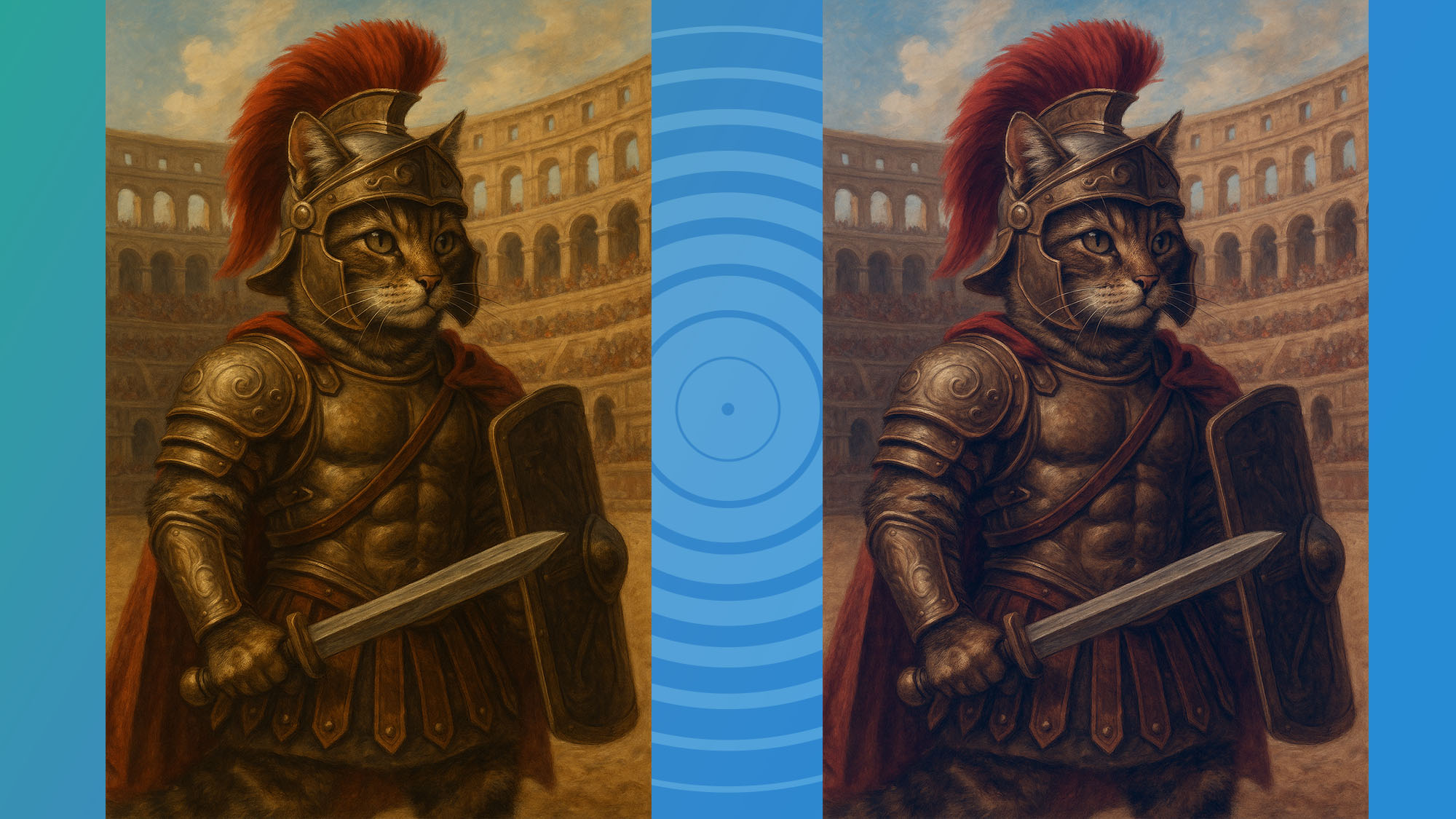Have you noticed that AI-generated images are easy to spot because they have a slight yellow tint? This yellow tint is not for everyone. AI Image Generators; this is actually very specific to one of them: ChatGPT.
For some reason, ChatGPT generates images with a slight yellow tint by default. You don't notice it at first, but the more images you create, the more you begin to notice that they often have a sepia or yellow tone. This is not only distracting, but also takes away from the realism of the image and makes it look dated.
Soft yellow
As an example, I asked ChatGPT to create a variety of images—an invitation to a child's birthday party, a cat as a Roman gladiator in the Colosseum, and a concept image for a presentation.
I would say that to some extent you can see the default yellow background tone in all images:
The question is, what can be done about it? Well, when you write a prompt to a source image, you can try including color-specific instructions such as “neutral white balance” or “no yellow cast, accurate skin tones.” This will help stop the problem before it starts, but it means your clues will become longer and more complex.
Another solution is to mention specific lighting conditions, such as “bright afternoon light,” or use a negative cue in the prompt, such as “avoid yellowish or sepia tones.”
What you can't do with ChatGPT is the obvious thing: generate an image and then say something like “make it less yellow”. Due to the way ChatGPT works, it will produce an image that is less yellow than before, but the process will recreate the entire image, so it won't be exactly the same image you started with. In fact, it will often look quite different.
Python script
If you want to just get a color-corrected version of the same image inside ChatGPT, you can cut and paste the following Python script (from Reddit user Linkfarm) in ChatGPT and ask it to run it on the image after it's created.
import cv2
import numpy as np
def neutralize_yellow(image):
"""
Takes a BGR image (NumPy array) and reduces yellow tint to make colors more neutral.
Returns a new neutralized image.
"""
# Convert to LAB color space (L = lightness, A = green–red, B = blue–yellow)
lab = cv2.cvtColor(image, cv2.COLOR_BGR2LAB)
# Split into channels
L, A, B = cv2.split(lab)
# Compute how much yellow there is (positive shift in B channel)
yellow_strength = np.mean(B) - 128 # 128 = neutral midpoint
# Reduce yellow by shifting B channel toward neutral (128)
if yellow_strength > 0:
correction = np.clip(B - yellow_strength * 0.8, 0, 255)
lab = cv2.merge((L, A, correction))
else:
lab = cv2.merge((L, A, B))
# Convert back to BGR
neutral_img = cv2.cvtColor(lab, cv2.COLOR_LAB2BGR)
return neutral_img
# Example use from another script:
# from remove_yellow_tint import neutralize_yellow
# neutral_image = neutralize_yellow(image_from_other_script)ChatGPT will run the Python script without any problems and the image will remain the same as before, just adjust its color in ChatGPT.
Here is an example before and after using the Python script:

It's possible that future versions of ChatGPT won't have this yellow tint when creating images, but until then you can do something about it. Or you can check out the pretty excellent Nano Banana image generator included with Gemini.
Follow TechRadar on Google News. And add us as your preferred source to get our expert news, reviews and opinions in your feeds. Be sure to click the “Subscribe” button!
And of course you can also Follow TechRadar on TikTok for news, reviews, unboxing videos and get regular updates from us on whatsapp too much.

The best business laptops for any budget.







